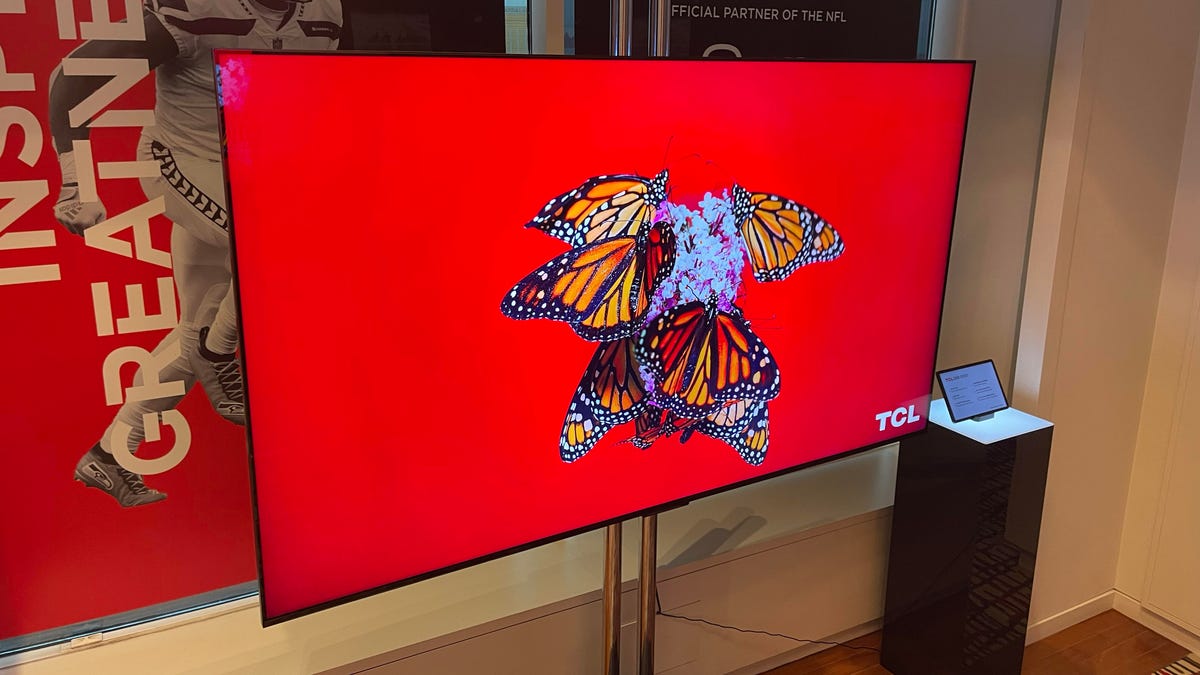TCL Took My Favorite Value TV, Bumped the Brightness and Kept the Same Price
The company's new 2024 TV lineup has a lot of mini-LEDs for not a lot of money.

The TCL QM851 could be one of the best TVs for the buck in 2024.
TVs just seem to be getting bigger, brighter and better every year, and value-first companies like TCL are doing it without jacking prices. I previewed the company's latest lineup of televisions at CES 2024 and from what I've seen so far, they once again look like superb performers for the money.
The most intriguing series -- aside from a 115-inch behemoth that costs $20,000 -- is the new QM851. TCL says it will cost about the same as the QM850 it replaces (around $900 for the 65-inch size), but it's nearly twice as bright. The company claims 5,000 nits in highlights, compared with 2,800 nits last year.
The QM850 was my favorite TV for the money last year, in part thanks to superior brightness, and its overall image quality was superb. The 851, with its higher brightness and more mini-LED dimming zones (up to 5,000, again up from 2,800), should be even better. I had the chance to check out the 851 in person at TCL's suite, and while my viewing time was brief and as usual restricted to canned demo footage, the TV definitely looked good.
The QM851 comes in 65-, 75-, 85- and 98-inch sizes -- unfortunately it lacks a 55-inch size. Also new for 2024 is a 2.1.2-channel Dolby Atmos sound system and a NextGen TV tuner.
The step-down QM751 does offer a 55-inch size, however, in addition to all of the sizes found on the 851. This series isn't as bright, but TCL still claims 2,000 nits thanks to a mini-LED backlight with up to 1,300 zones. Both the 851 and 751 offer quantum dot color, a 120Hz panel and TCL's game accelerator system, which can refresh at up to 240Hz by cuttng resolution in half. It's a neat feature but hardly (cough) a game-changer since it works only with PCs.
TCL's final pair of quantum dot TV series, the Q651G-Pro and vanilla Q651, lack mini-LED so they won't be as bright. The main difference between the two is that the Pro has local dimming, so it should have better contrast and picture quality, and the non-Pro comes in more sizes (down to 43 inches and up to 98). In both series, only the 85- and 98-inch models have 120Hz refresh rate panels -- the others are 60Hz native, so they can't take advantage of smoother 4K/120Hz gaming from a PS5 or Xbox Series X.
Once again TCL is using the Google TV operating system exclusively in its midrange and high-end TVs. It will continue to sell a handful of smaller, less-expensive Roku TVs in its S series. I prefer built-in Roku to Google TV, but the latter is solid in its own right, and you can always add a Roku streamer to any TV if you want.
The new TCL TVs go on sale this spring and I'm looking forward to the chance to review them in CNET's lab.

